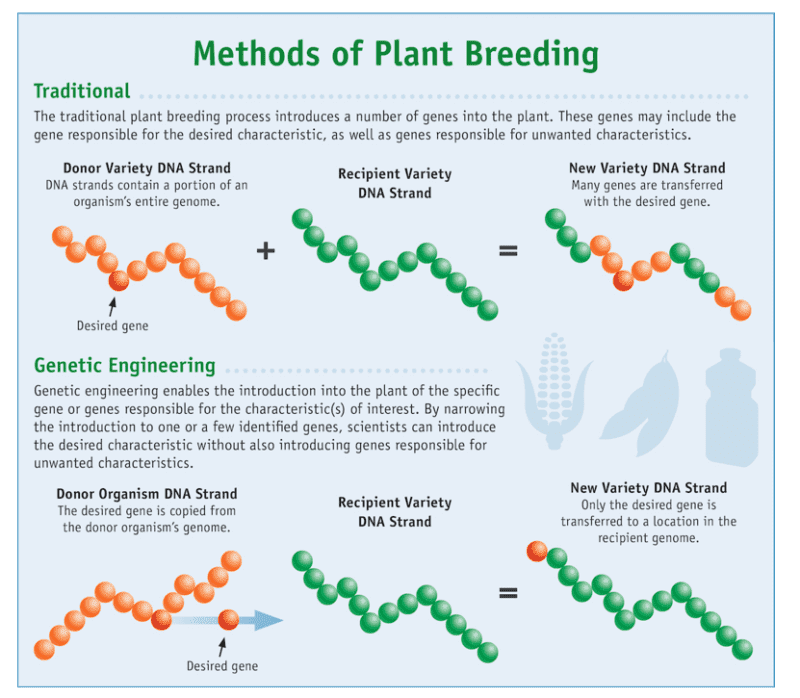Genetic modification (also known as genetic engineering) is the process by which an organism’s genome is modified to introduce desirable characteristics.
Genetic modification often results in the production of transgenic species. The term ‘transgenic’ means the transfer of genetic material from one species to a different species.
The process of genetic engineering involves enzymes and vectors and is carried out using the steps shown in the following diagram:

One useful application of genetic modification is the manufacture of large amounts of human insulin from genetically modified bacteria that are grown in a fermenter.
The process of genetic engineering is outlined below:
- Restriction enzymes recognise specific genes and cut the DNA at specific sites where these genes are found. In the process of human insulin production, the human DNA is cut open and the insulin gene is removed using restriction enzymes. The ends of the insulin gene are left with ‘sticky ends’.
- Vectors are used to transfer DNA from one species into a cell. There are two types of vectors commonly used. The first type are plasmids. These are small rings of DNA which can be transferred from one bacteria to another. The second type are viruses which are used to insert DNA into the organisms they enter. In the process of insulin production, the vector used is a plasmid. The plasmid DNA is cut open using the same restriction enzyme as was used to cut the human insulin gene. The vector DNA is also left with ‘sticky ends’.
- Ligase enzymes are used to attach the sticky ends of the insulin gene and the vector DNA. This results in the two pieces of DNA joining together to produce recombinant DNA.
- The recombinant DNA is inserted into bacterial cells producing genetically modified bacteria.
- These genetically modified bacteria use the gene inserted to produce human insulin. The genetically modified bacteria are grown in a fermenter in large numbers which allows the production of very large amounts of human insulin in a very short space of time.
Genetically modified plants can be used to improve food production and provide more food for people around the world. This is particularly important to people living in poverty-stricken areas of the world or places suffering from drought conditions or poor soil conditions.
Crops can be genetically modified to make them resistant to pests. This increases the crop yields and reduces the need for chemical pesticides which can be expensive and contaminate the ecosystem. Crops can also be modified to make them grow better in drought conditions which increases the crop yields.
Some crops can also be genetically modified to provide vitamins and minerals in countries where people may be suffering from deficiencies. An example of this is Golden Rice which has been genetically modified to produce beta-carotene which is needed by humans to synthesise vitamin A in the body. Vitamin A is needed for good eye function in humans. A deficiency in vitamin A can lead to poor eyesight and blindness. The Golden Rice can be grown in countries where vitamin A deficiency is common.
Another example of genetic engineering is the addition of genes to crop plants to make them resistant to the effects of herbicides. This means that the farmers can apply herbicides to the fields to kill any weeds which grow, without the crop plants being affected.



